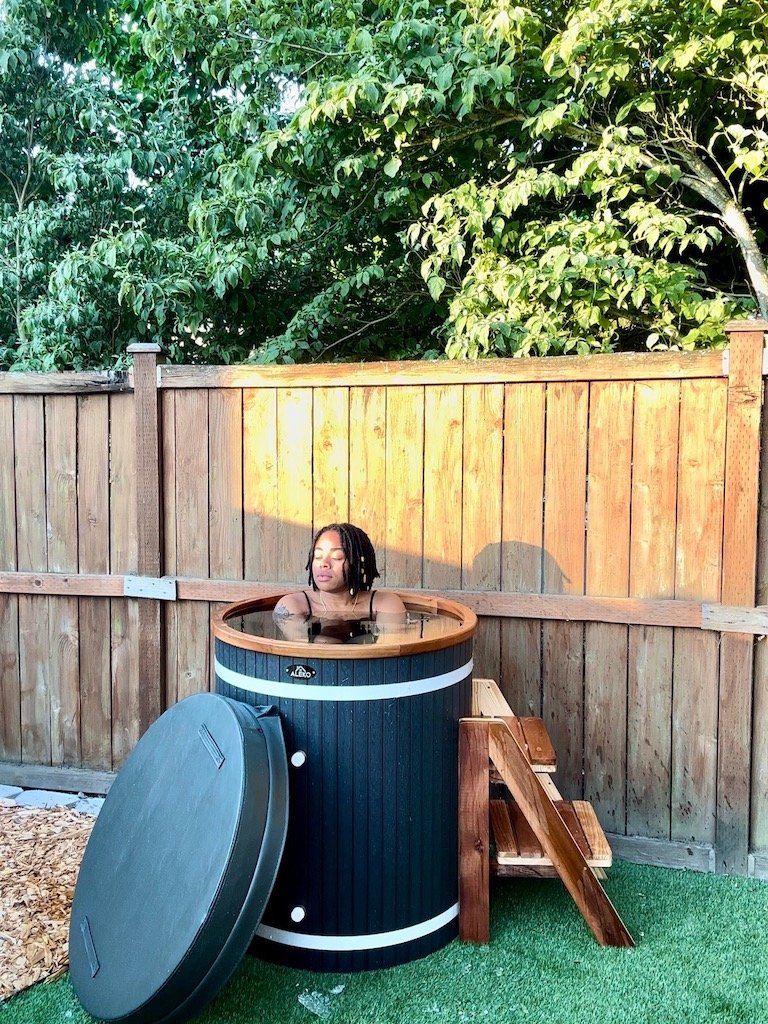Cold Plunging for Anxiety & Stress: How Ice Baths Can Help Your Mental Health
What Is Cold Plunging?
“Cold plunges: where the mind surrenders and the body thrives.” - Lynniah
Cold plunging is the practice of submerging your body in cold water for a period of time to reap vast benefits for the mind, body, and spirit. While many first associate it with athletic recovery, the benefits extend far beyond muscle relief—impacting stress levels, mental clarity, resilience, and even hormone balance.
My Journey with Cold Plunging
I first learned about cold plunging in high school through athletics, where it was common for muscle recovery. At the time, I didn’t think much about it beyond its physical benefits.
But it wasn’t until my 20s that I discovered its powerful effects on mental health. I started researching ways to manage stress, balance my hormones, lose weight, and maintain fitness—and cold plunging kept coming up as a game-changer.
Over the years, my understanding of cold immersion therapy has deepened. Now, I see it as more than just a wellness hack—it’s a tool for building resilience.
Cold Plunging & The Resilience Reserve
One of the biggest takeaways from my cold plunge journey is something I call the "resilience reserve."
Cold plunging trains your nervous system to handle stress better.
Every time you submerge yourself in cold water, you are forcing your body into a controlled stress response. Your heart rate spikes, your breath shortens, and your mind panics—until you learn to control it. Over time, this builds mental and physical resilience, meaning that when real-life stress or tragedy strikes, your body doesn’t immediately collapse into a cortisol-fueled breakdown. Instead, it pulls from your resilience reserve, allowing you to respond to stress with more control and clarity.
This is why consistent cold plunging is so effective. It trains your body to stay calm under pressure, whether it's an ice bath or an unexpected life event.
How to Start Cold Plunging for Stress & Anxiety
I have cold plunged in lakes, rivers, spas, and at home. No matter where you do it, the beginning is always challenging. But consistency is key!
Beginner’s Protocol:
Start with 30 seconds at 50°F (10°C) for the first week.
Gradually increase the duration to 1-2 minutes.
Focus on breath control—slow inhales and extended exhales.
Cold plunge 3-4 times per week for lasting mental health benefits.
Pro Tip: If you can, invest in a cold plunge tub at home. If not, fill your bathtub with cold water and ice—it works just as well!
What Happens After Just One Cold Plunge?
Even one cold plunge session can bring immediate benefits. Here’s what happens:
Instant Mood Boost – Cold exposure triggers a dopamine rush, which improves mood and reduces anxiety.
Lowered Cortisol (Stress Hormone) – Your body learns to regulate stress more efficiently, leading to less overall anxiety.
Increased Mental Clarity – The shock of cold water wakes up your brain, improving focus and alertness.
Reduced Inflammation – Cold therapy lowers inflammation, which is linked to stress-related health issues.
Better Sleep – Post-plunge, your nervous system shifts into deep relaxation mode, making it easier to fall and stay asleep.
Cold Therapy vs. Heat Therapy: The Power of Contrast Therapy
“It takes the fire to break you open, and the ice to teach you stillness.”
– Lalah Delia
Cold plunging is part of a larger category of wellness known as cold therapy (also called cryotherapy). But it’s just one piece of the puzzle—heat therapy is the other.
What Is Heat Therapy?
Heat therapy includes practices like:
Saunas (infrared & traditional)
Hot baths
Steam rooms
Hot yoga
Contrast Therapy: Cold & Heat Combined
One of the most powerful methods I’ve tried is contrast therapy, which alternates between cold and heat exposure. A 45-minute to 2-hour session of switching between cold plunges and heat therapy can have:
Massive detoxifying effects
Insane circulation benefits
A total nervous system reset
Enhanced muscle recovery
The results? You feel completely renewed—like a new person.
Final Thoughts: Is Cold Plunging Worth It for Mental Health?
Absolutely. Cold plunging is more than just a trend—it’s a science-backed tool for reducing stress, anxiety, and building resilience. It’s one of the few natural methods that can rewire how your nervous system reacts to stress, helping you navigate life’s challenges with more calm, focus, and strength.
If you’re feeling overwhelmed, anxious, or mentally drained, I highly recommend giving cold plunging a try. It’s challenging at first—but the long-term benefits are life-changing.
So, are you ready to take the plunge?


